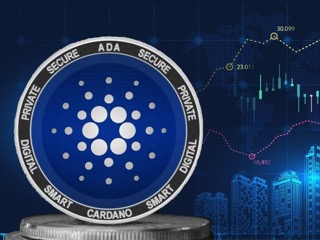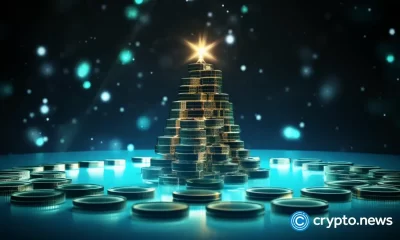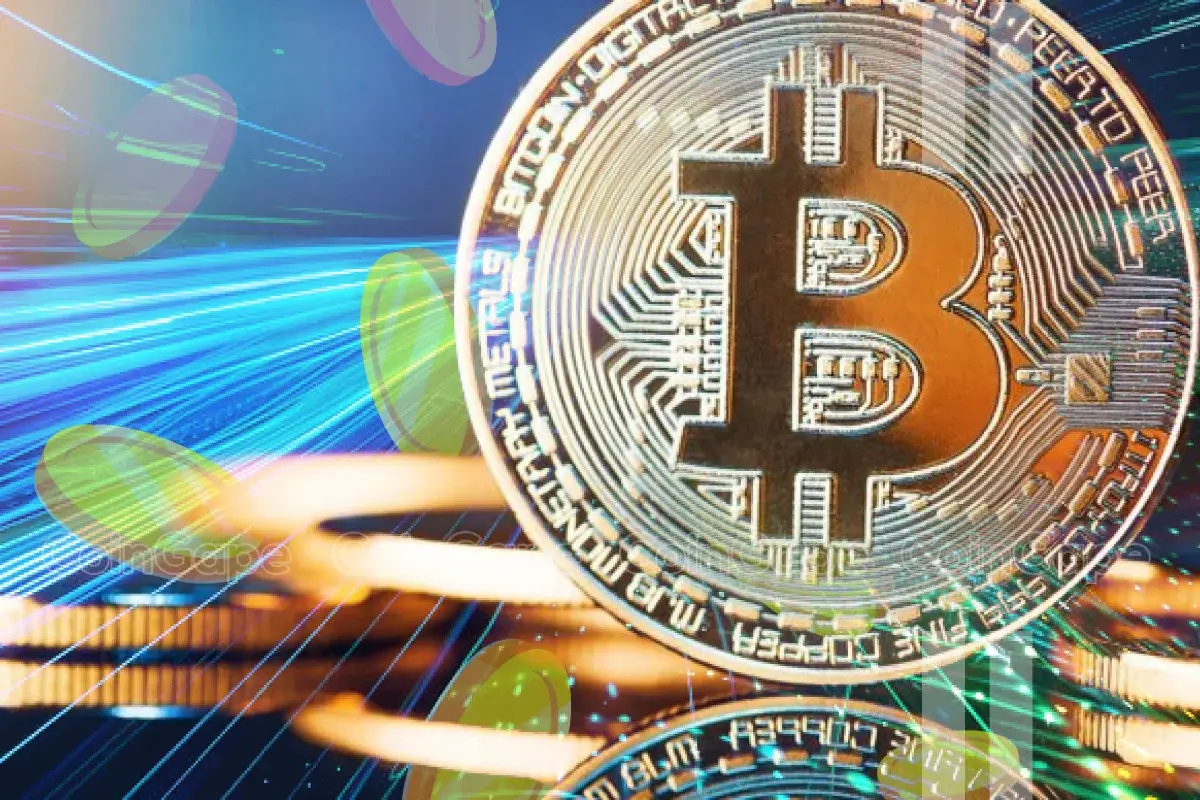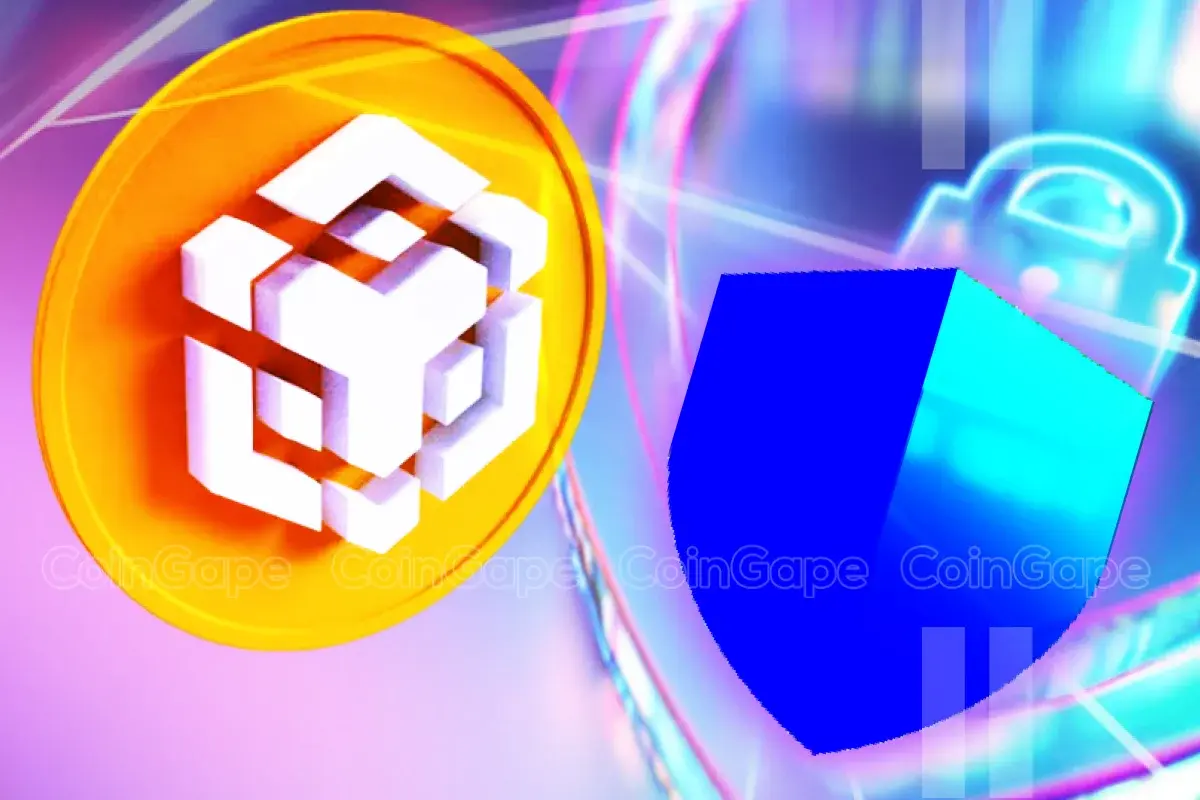blog
Why FTO Model Is More Advanced Than pump.fun’s Bonding Curve On Berachain
Published
4 months agoon
By
admin
The rise of decentralized finance (DeFi) has sparked a surge in new projects driven by token-based economies. As DeFi continues to grow, an increasing number of projects are launching their tokens to capitalize on the expanding market.
Among the hottest trends right now are meme token launches, particularly due to the innovative bonding curve model introduced by pump.fun. The meme token market currently boasts a cap of $500 million. Following the initial success of pump.fun, numerous forks have emerged on other chains, such as pump.best from base and Kodiak Finance from berachain
For those unfamiliar with Berachain, it’s a high-performance, EVM-compatible blockchain built on a Proof-of-Liquidity consensus, supported by the BeaconKit framework. This novel consensus mechanism is designed to align network incentives, fostering a robust synergy between Berachain validators, ecosystem projects, and everyday users. Unlike Solana, Berachain’s culture and consensus mechanism make it less suitable for forking pump.fun. However, innovation continues to thrive, as demonstrated by Honeypot Finance, a Berachain ecosystem project, which introduced a new launch model—FTO—better aligned with Berachain’s Proof-of-Liquidity framework.
How Does Bonding Curve Work on Pump.fun?
The bonding curve is a launch mechanism brought by pump.fun and recently went really hot in Solana ecosystem. Since it launched,Over 2 million tokens being launched and generated over 105 million revenue. Why it goes so hot.
Let’s put a graph to present how the value of a token increases with the increase in supply. It is noteworthy that the maths only plays out in case of a limited/fixed token supply.


In this model, early investors benefit the most from such a launch mechanism.
Below is more break down of pump.fun model
Once a token is launched on Pump.fun, the primary objective is to sell the tokens. Here’s how the process works post sale:
- Once the target of selling all 800 million tokens is met, the bonding curve reaches full capacity and automatically transitions to Radium.
- The transition to Radium requires approximately 86 SOLs, with the number fluctuating between 84 and 86
- The term “King of the Hill” is used to refer to the sale of 400 million tokens, i.e. half of the target. Approximately 45 SOLs are required for the “King of the Hill” status.
- There’s also a threshold in terms of market cap. It is $69,000 for Solana and $420,000 for Blast.
When a token’s market capitalization reaches designated thresholds ($69,000 for Solana and $420,000 for Blast), Pump.fun injects liquidity ($12,000 for Solana and $30,000 for Blast) into decentralized exchanges like Raydium and Thruster DEX.
In nutshell, Pump.fun bonding curve model takes good trade-off for fair launch and fomo emotions. Many degens earns 10x or 100x while a lot of normal users lost money in it
FTO: The Anti-Rug Pull Launch Mechanism Within Berachain
FTO (fair token offering) is a mechanism designed by Honeypot Finance to help new projects to issue their tokens. With the recent update from the Honeypot Finance team, with a bit tweak of the model, it works perfect to launch the meme token on berachain as well. Here’s the initial model that we saw from the team
- FTO involves the creation of a 100% deep liquidity pool for instant trading. While this enables trading from day 1, there are no pre-minted tokens in the market. It rules out pump or dump by early investors since there’s nothing like early access to the token.
- While the team behind the project can sell the LP tokens for further development, this does not lead to a shark slump in the token’s price. The maximum loss from users is only 50% compared to a lot of launch model (even bonding curve) could lead to over 90% loss
- Both users and project will become the Liquidity providers after launch and are eligible for a share of transaction fees in accordance with their contribution. Besides, they also earn $BGT emissions from berachain’s Proof of liquidity, unlocking access to further monetization opportunities through the Flywheel Model.
Honeypot Finance’s FTO vs Pump.fun’s Bonding Curve
The primary difference between the FTO (Fair Token Offering) and Bonding Curve models lies in liquidity sourcing. While both methods aim to foster long-term engagement and efficient pricing, the Bonding Curve model fails to mitigate risks such as potential loss of funds and a lack of sustained user interest. FTO, on the other hand, excels in prioritizing liquidity by enabling community members to become liquidity providers. In contrast, the Bonding Curve model relies solely on the token deployer for liquidity, which creates an imbalance, potentially leading to manipulative practices like pump-and-dump schemes or rug pulls.
The FTO model aligns more effectively with Berachain’s Proof of Liquidity (POL) mechanism, as it allows users to act as liquidity providers post-launch while earning $BGT rewards for their contributions to the pool. This makes FTO a more robust and more user-friendly solution on berachain
In the Pump.fun model, the lack of rewards for the token deployer who crafts a successful meme token name is another notable shortcoming. Although Honeypot Finance has yet to release the full details of its meme launchpad, the potential of this model to fairly reward token deployers is clear. It’s exciting to anticipate how the final version will enhance Berachain’s Proof of Liquidity and accelerate innovation in this space.
Source link
You may like


Possible Deep Correction Could Push Cardano Price To $0.43, Here’s How


Crypto whales stockpile these 3 altcoins before the next bull run


Sonic Chain Launches Ethereum Bridge, FTM Price Reacts


Christmas gift as MOVE, BGB, ZEC lead altcoin gainers


MoonPay Considering $150,000,000 Acquisition of Crypto Payment Firm Helio: Report


Shiba Inu Burn Rate Soars 100% As Community Lauds Major Milestones
blog
Crypto in 2024: A Game-Changing Year for Investors
Published
2 days agoon
December 24, 2024By
admin
This year, the crypto world entered a new era of growth, accessibility, and opportunity. Bitcoin and Ethereum continue to lead the charge, but it’s the introduction of smarter, more versatile tools like savings wallets that’s redefining how investors approach digital assets. If you’re looking for ways to grow your portfolio without riding the market volatility rollercoaster, 2024 is your year.
What’s Driving the Crypto Market in 2024?
The numbers tell the story: 2024 became a landmark year for cryptocurrencies. Bitcoin, the flagship digital asset, smashed through its previous ceilings to hit an all-time high of $107 000, driven by global adoption and institutional enthusiasm. Ethereum didn’t lag too far behind — it crossed the $4 200 mark, with $2.7 billion in inflows into Ethereum-focused products, cementing its role in decentralized finance (DeFi).
The crypto market cap surged to $2.4 trillion, supported by groundbreaking financial products like Bitcoin and Ethereum exchange-traded funds (ETFs). Bitcoin ETFs, in particular, attracted $10.5 billion in inflows in just one month, bringing total ETF assets to $110 billion. These products simplify access to digital assets for both individual and institutional investors, driving the sector’s incredible growth.
At the same time, stablecoins, including USDT and USDC, now valued at $200 billion, are emerging as key tools for risk management and steady returns. Investors increasingly use them in savings wallets to generate reliable income while protecting their portfolios from market turbulence.
Where Is the Money Flowing?
Bitcoin ETFs: The New Gold Standard
Bitcoin ETFs have opened the door for mainstream investors to access crypto without the complexities of wallets and private keys. With $110 billion in total assets, these ETFs have become a crucial driver of Bitcoin’s meteoric rise.
Ethereum Staking: Rewards for Long-Term Holders
Ethereum is winning over passive income enthusiasts with staking rewards of 5% to 10% annually. These returns, combined with Ethereum’s expanding role in DeFi, make it an attractive choice for those seeking both growth and regular payouts.
Savings Wallets: Where Stability Meets Profitability
Savings wallets like Coinhold offer a balanced solution for investors who want predictable returns. These wallets provide up to 14% annual interest on stablecoins and 8% on major cryptocurrencies like Bitcoin and Ethereum, making them ideal for both cautious savers and ambitious growth seekers.
Why Coinhold Is Your Best Bet
Coinhold by EMCD is redefining what it means to earn passive income in crypto. Designed to combine ease of use, competitive rates, and robust security, Coinhold gives your digital assets the chance to grow steadily — whether you’re a beginner or a seasoned crypto investor.
What Sets Coinhold Apart
Impressive Rates: Coinhold offers up to 14% annual interest on stablecoins and 8% on Bitcoin and Ethereum, putting it ahead of most other investment tools.
Flexible Options: Choose flexible deposits for instant access to funds or fixed-term deposits for higher returns.
Security and Reliability: Powered by EMCD, a trusted name in the crypto industry, Coinhold keeps your assets safe while delivering consistent returns.
How to Get Started with Coinhold
Starting your journey with Coinhold is quick and easy. Here’s your 5 steps to passive income:
1. Sign up on the EMCD site or app
2. Verify your identity to secure your account and comply with regulations
3. Select a plan — decide between flexible or fixed-term deposits based on your financial goals
4. Top up your wallet with Bitcoin, Ethereum, or stablecoins like USDT and USDC
5. Earn rewards as soon as your deposit is confirmed — track your growth through Coinhold’s simple and intuitive dashboard
2024: The Year to Invest Smarter
Crypto’s 2024 evolution isn’t just about record-breaking prices — it’s about empowering investors with tools that balance risk and reward. Bitcoin ETFs and Ethereum staking are rewriting the playbook for growth, while savings wallets like Coinhold offer the consistency and flexibility needed in a volatile market.
With Coinhold, your assets don’t just sit idle — they work for you. Whether you’re planning for the long haul or seeking short-term gains, Coinhold provides the perfect blend of security and profitability. Start earning smarter today — because your crypto deserves to grow as much as you do.
Source link
blog
Insights from Trust Wallet and BNB Chain on Crypto Wallet Security
Published
1 week agoon
December 18, 2024By
admin
Security of tokens should be the number one priority of all crypto users. Recent incidents such as the DEXX security incident where at least $21 million worth of user funds was lost, are evidence of the inherent risks of the crypto world. In this scenario, attackers compromised over 1000 users by simply taking advantage of the existing shortcomings of the platform’s private key management.
The One Golden Rule of Crypto: Not Your Keys, Not Your Coins
Begin by choosing the right wallet and using the best security practices on offer. There are two types of crypto wallets – Hot wallets, which have internet connectivity and cold wallets, which are stored offline. Apart from these two, there are smart contract wallets which can be programmed.
Now let’s examine BNB Chain and Trust Wallet’s opinion on crypto wallet safety and how users can make informed decisions based on them.
Lessons learnt from the DEXX security Issue.
Before we dive into what crypto wallet security implies, it is necessary that we understand more about the recent security incident mentioned before.
DEXX, which is a reputed on-chain trading terminal platform, experienced an attack on November 16th, 2024, which primarily affected Solana funds. As a result of this attack over $21 million worth of user funds were lost, with about 1000 victim addresses.
The community is concerned after finding out that more than 9000 unauthorized transactions were used in the attack. Subsequent investigations into several compromised addresses found out that the stolen funds remain in the hacker’s possession. This points to the fact that a single offender perpetrated the incident.
The root cause of the incident was identified as vulnerability in the private key storage of the platform’s server. The API for exporting wallets from DEXX returned private, unencrypted keys. This reveals that DEXX stored private keys on its servers. All this, despite branding itself as a non-custodial wallet – what an irony.
Several measures can be taken to prevent this sort of breach.
- Avoiding Storage of Private Keys: Private keys should never have been stored on DEXX’s servers, as this practice directly contradicts its non-custodial claims.
- Encryption: Sensitive data should be encrypted during transmission and storage to protect delicate user information.
- Regular Security Audits: Regular security audits should have been conducted to identify vulnerabilities before they were exploited.
Checking whether selected wallets have gone through proper audits is key for users. When investing a substantial amount of funds, it’s better to choose reputed and time-tested platforms to decrease the chances of loss.
What to Look for in a Secure Wallet?
Consider the following features when looking for a secure cryptocurrency wallet.
Secure Key Management
Reliable wallets should commit to secure key management. They should ensure that all private keys are generated, stored and managed in the most secure manner possible. Some of the key aspects of secure key management include:
Backup and Recovery: Users should be provided with secure backup options. They should also have the ability to recover private keys or seed phrases when needed.
Seed Phrase Encryption: Ensure that the wallet has strong encryption measures for seed phrases.
Non-custodial design: Go for wallets that do not store their private keys on centralized servers. User should have full control over their private keys.
Wallet History and Security Licenses
Selecting a secure wallet is undoubtedly the most challenging thing a new Web3 user has to do. Many users face difficulties in determining whether a wallet is secure and follows the best practices and protocols.
With that being said, follow these steps to choose a secure wallet.
- Begin by checking the past records of the wallet and opting for one with a proven history and good reputation. These are likely to follow strict security protocols.
- Check whether the wallet has passed multiple audits and holds a valid security license.
Follow these above steps to make informed decisions.
Security Scanners and Alerts
Users seldom understand the full implication of a transaction when performing them or exploring dApps. When receiving a given message or prompted transaction from a dApp, it requires a lot of trust from the user’s end. Why? – because its almost impossible to know the full extent of the transaction’s consequences, just by looking at the on-screen prompt.
Fortunately, Trust Wallet’s Security Scanner feature solves this problem. This feature is responsible for analyzing transactions and identifying suspicious patterns, even before the funds are sent. This reduces the chances of users accepting or signing fraudulent or unwanted transactions. This feature alone has safeguarded $450 million from being stolen.
Wallets with this feature simulate the transaction. They then provide the results to the users instead of just displaying the message or the transaction the DApp requests. This ensures that the client’s action is the same as their expectations.
Crypto wallets are known as the gateway to interacting with dApps. But since the users do not fully understand the imitations of transactions, the security scanner feature should be used.
Step-by-Step Guide for Choosing a Wallet
The main tool for interacting with the crypto ecosystem is the crypto wallet. It functions as the gateway to dApps and blockchain networks. This makes choosing the right wallet very important, even if one is trying to play blockchain games as opposed to storing assets or executing transactions.
Before you select a wallet, ask these questions to yourself.
- Do you want to hold assets long-term or are you simply a day trader?
- What is the maximum amount of risk you can take?
- Do you want to engage with dApps, or do you need basic storage or transaction capabilities?
Crypto Wallet Types
Crypto wallets can come in two forms – software wallets and hardware wallets.
Software wallets have to be accessed using smartphones, browsers or computers. Users can conveniently connect with Web3 decentralized applications or get access to their digital assets simply by clicking.
This feature makes them popular among crypto traders. The main advantage of software wallets is the level of functionality and immediate accessibility they provide. They are versatile, capable of connecting to dApps seamlessly and be used for use cases such as crypto payments and digital IDs.
A good example of a software wallet is Trust Wallet. It is compatible with both desktops and mobile devices.
When using a hot wallet on your PC or mobile, it’s crucial to install antivirus software for malware protection to ensure the security of your personal computer or phone. Hardware wallets on the other hand are physical devices used to store private keys in an offline environment. They are considered the safest option for crypto management and storage for this reason. It stores private keys away from internet connectivity.
Hardware wallets are ideal for users who prefer an extra layer of physical security or wish to store their crypto assets without frequent transactions. They are also suited for those who like to store their crypto long-term. However, the trade-off is not convenient, as things like transaction execution can take longer.
Can hardware and software wallets be used simultaneously?
It is possible to use hardware and software wallets at the same time. You can connect Ledger, which is a hardware wallet to Trust Wallet’s( software wallet) browser extension feature.
Are smart contract wallets safe?
Smart contract wallets use smart contracts that can function as wallets and provide features such as signature validation, asset ownership, and execution. Most use the ERC-4337 industry standard to develop a smart contract wallet even though other methods exist.
Smart contract wallets can bolster security and usability compared to traditional wallets. With smart contract wallets, users can get multi-owner accounts, flexible key management, token gas payments, account recovery, batch transactions, and advanced UX with security audits.
Conclusion
The world of cryptocurrency has both potential rewards and inherent risks. The key here is to stay informed and secure. Prioritize security by choosing wallets that can provide the above-mentioned features. Remember, it’s essential to make well-informed decisions and understand your needs before you choose a particular type of wallet.
Lastly, security is a personal thing. Stay vigilant, avoid sharing personal information and use different storage methods.
Source link
blog
Layer-1 and Layer-2 impact of blockchain on technology and society
Published
2 months agoon
October 22, 2024By
admin
The impact of blockchain on technology and society can not be overstated. Since entering the picture following the discovery of Bitcoin in 2009, the blockchain has influenced many industries, even as it’s become a vital institutional technology itself. Blockchain technology has disrupted institutions and traditional social systems across the globe, creating new economies and incentives that have filled gaps left unattended by conventional institutions.
Drew Pascarella, a senior lecturer of Finance at Cornell University opined that “Blockchain has the potential to be quite disruptive and make the way people work fundamentally more transparent and collaborative in the future.” This opinion is a general consensus across the industry.
The global blockchain technology market was valued at $17.57 billion in 2023. This figure has grown to $27.84 billion in 2024 and is poised to reach $825.93 billion by 2032. The CAGR in this forecast period is 52.8%. Figures like these show how far blockchain technology has come, an evolution that we’ll be discussing in this article. Some diverse applications of this disruptive technology include Layer-1s, Layer-2s, and Real-World Assets (RWAs) and these are what we will be focusing on — highlighting the growth through some key projects.
Understanding Blockchain Technology
The blockchain is a decentralized ledger technology that records transactions across multiple nodes (re: computers) within a business network. Before the advent of the blockchain, transactions, and record-keeping in industries suffered from vulnerabilities like fraud and cyber-attacks. A limited level of transparency also affected the operations and bottom lines of businesses in different sectors. All these have since been drastically reduced or eradicated with the introduction of blockchain technology. Now there’s greater trust, improved security, and efficiency with faster transaction speeds becoming the norm.
Layer-1 Solutions
Layer-1 blockchains like Bitcoin and Ethereum provide the core infrastructure for the blockchain. These chains provide network security and process transactions with Bitcoin processing up to 7 transactions per second (TPS), while Ethereum processes around 15 TPS. Traditional payment systems on their part depend on banks and payment processors to facilitate transactions. Settlements for these transactions often take 1-3 business days to reflect depending on the banking institution and the type of transfer.
Layer-1’s are becoming increasingly important for cross-chain transactions. The need for communication and data sharing with other networks has seen the rise of interoperable platforms like Aptos and MANTRA Chain.
Aptos is a layer-1 community-driven network governed by the people who build on it. It leverages the novel Move programming language and a parallel execution engine to improve the throughput of transactions significantly. The blockchain processes approximately 160,000 TPS, validating them in under one second.
MANTRA Chain is a purpose-built layer-1 blockchain ecosystem that integrates RWAs into the blockchain space. According to Boston Consulting Group (BCG) research, the tokenized asset market will reach $16 trillion by 2030 (10% of the global GDP). Another study by Binance shows that the market value of tokenized RWAs has surged past $12 billion. This is proof that RWAs are quickly becoming a huge market with the MANTRA blockchain at the forefront of this niche offering an innovative solution: a permissionless environment where permissioned applications can flourish. This bridges the gap between traditional finance (TradFi) and decentralized systems.
Scaling Solutions With Layer-2
The blockchain trilemma is a term coined by Ethereum co-founder Vitalik Buterin, and it refers to the challenge of achieving three critical aspects of blockchain technology: decentralization, security, and scalability. The first pillar, security, is vital because only robust defenses can prevent and withstand malicious attacks. The peak of scalability is having blockchains accommodate an increased number of transactions and users, without a substantial increase in fees or slower transaction times. As highlighted in this article, decentralization is an essential feature of blockchain technology as control over a network is evenly distributed among participants, ensuring fairness and transparency.
Layer-2 solutions are solving this trilemma, and a great example of this is Metis. Metis is an Ethereum layer-2 Rollup platform that offers simple and fast smart contract deployment within the network. Metis provides solutions to some of the big challenges present on the Ethereum network, including transaction speed, cost, and scalability. This layer 2 is also the first Optimistic Rollup that has achieved sequencer decentralization, eliminating single points of failure and properly aligning incentives between all network participants.
Privacy and Censorship Resistance
The need for privacy and censorship resistance has seen the rise of privacy-preserving cryptocurrencies like TOMI. TOMI is the native token of tomiNET, a parallel worldwide web designed as an alternative to the government-controlled and censored web. It is targeted at users in locations where their access to open information is limited, or where businesses cannot ensure their domain-based property rights on the existing Web2 infrastructure. TOMI combines the best Web2 and Web3 technologies for a privacy-preserving, self-governing internet.
The need for blockchain interoperability
There are currently over 55 blockchains, and these networks communicate with each other, sending and receiving data and tokens are important, especially in today’s blockchain landscape. This is blockchain interoperability. Emerging blockchains with unique features and use cases must be able to communicate and share data. This allows for seamless collaboration between different networks, thereby improving the overall utility and efficiency of blockchain technology.
While most layer-1 blockchains don’t inherently support cross-chain interoperability, Aptos champions building a flexible and adaptable infrastructure, allowing for potentially easier integrations with cross-chain protocols. Because MANTRA is a blockchain designed for RWAs, it likely focuses on the interoperability between TradFi systems and blockchain networks. As an Ethereum layer-2 solution, Metis inherently offers interoperability with the Ethereum ecosystem. And even though tomiNet’s main focus is creating a censorship-resistant internet, it will likely adopt interoperability features that ensure seamless communication between its network and the existing Web2 infrastructure.
Conclusion
The blockchain industry continues to grow, and the technology is marked by innovative projects like the ones mentioned in this article. These platforms offer unique solutions to the challenges of scalability, security, and decentralization on the blockchain, as they shape a more inclusive and digital ecosystem.
Source link

Possible Deep Correction Could Push Cardano Price To $0.43, Here’s How

Crypto whales stockpile these 3 altcoins before the next bull run

Sonic Chain Launches Ethereum Bridge, FTM Price Reacts
Referrals

Christmas gift as MOVE, BGB, ZEC lead altcoin gainers

MoonPay Considering $150,000,000 Acquisition of Crypto Payment Firm Helio: Report

Shiba Inu Burn Rate Soars 100% As Community Lauds Major Milestones

A Very Bitcoin Christmas

From DMM Bitcoin to the US Government: Largest Crypto Exploits and Hacks of 2024

Access control exploits account for nearly 80% of all crypto hacks in 2024

Will XRP Price Break All-Time Highs In 2025?

Why it’s a better investment than Solana or Ripple in 2024

Six Bitcoin (BTC) Mutual Funds to Launch in Israel Next Week: Report

What Happens If Paul Atkins Dismisses the XRP Lawsuit?

Malicious Google ad campaign redirects crypto users to fake Pudgy Penguins website
182267361726451435

Why Did Trump Change His Mind on Bitcoin?

Top Crypto News Headlines of The Week

New U.S. president must bring clarity to crypto regulation, analyst says

Will XRP Price Defend $0.5 Support If SEC Decides to Appeal?

Bitcoin Open-Source Development Takes The Stage In Nashville

Ethereum, Solana touch key levels as Bitcoin spikes

Bitcoin 20% Surge In 3 Weeks Teases Record-Breaking Potential

Ethereum Crash A Buying Opportunity? This Whale Thinks So

Shiba Inu Price Slips 4% as 3500% Burn Rate Surge Fails to Halt Correction

Washington financial watchdog warns of scam involving fake crypto ‘professors’

‘Hamster Kombat’ Airdrop Delayed as Pre-Market Trading for Telegram Game Expands

Citigroup Executive Steps Down To Explore Crypto
Mostbet Güvenilir Mi – Casino Bonus 2024

NoOnes Bitcoin Philosophy: Everyone Eats
Trending

 3 months ago
3 months ago182267361726451435

 Donald Trump5 months ago
Donald Trump5 months agoWhy Did Trump Change His Mind on Bitcoin?

 24/7 Cryptocurrency News4 months ago
24/7 Cryptocurrency News4 months agoTop Crypto News Headlines of The Week

 News4 months ago
News4 months agoNew U.S. president must bring clarity to crypto regulation, analyst says

 Price analysis5 months ago
Price analysis5 months agoWill XRP Price Defend $0.5 Support If SEC Decides to Appeal?

 Opinion5 months ago
Opinion5 months agoBitcoin Open-Source Development Takes The Stage In Nashville

 Bitcoin5 months ago
Bitcoin5 months agoEthereum, Solana touch key levels as Bitcoin spikes

 Bitcoin5 months ago
Bitcoin5 months agoBitcoin 20% Surge In 3 Weeks Teases Record-Breaking Potential


